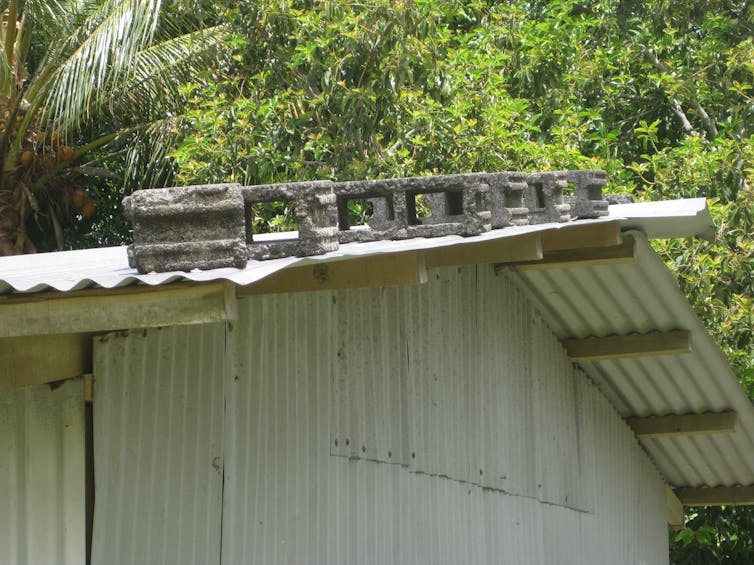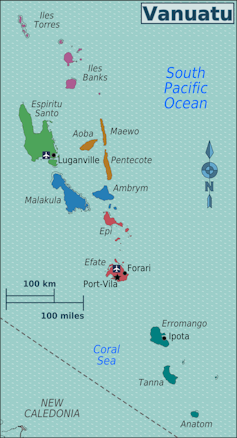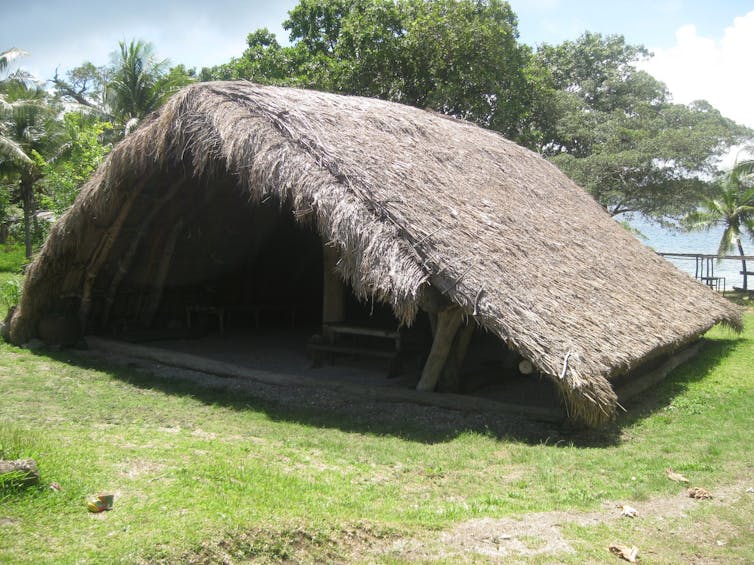Three months ago Cyclone Pam swept across Vanuatu, leaving 75,000 people in need of emergency shelter and damaging or destroying about 15,000 buildings, including homes, schools and medical facilities.
Since then, one of the most hotly debated questions within communities and on social media has been about how Vanuatu can rebuild so that it’s safer, stronger and more resilient to future cyclones.
Achieving this is not as simple as you might think. The strength and safety of buildings is critical – especially when you are rebuilding in a cyclone-prone region. But housing in particular is about more than walls and roofs; it’s also about community, traditions, culture and supporting the way people want to live.
One of the risks after a natural disaster like Cyclone Pam is that the dominant housing reconstruction mentality tends to prioritise strength and engineering solutions above all else. After Cyclone Tracy hit the city of Darwin in northern Australia in 1974, the immediate reconstruction reaction was characterised by the “concrete bunker” that was driven by draconian post-Cylone Tracy building codes.
In Vanuatu’s case, this kind of reaction could result in a shift away from the use of lightweight local materials to heavier materials such as concrete. That potentially creates a higher risk of personal injury due to collapse if not properly constructed.

Another common post-disaster solution is the prefabricated building. These buildings are quick to construct but their use as a solution to housing can be problematic if they do not properly respond to the specific cultural context or the environment. Prefabricated buildings rarely allow for traditions related to the design and construction process, which are often an important part of cultural identity.
Lessons from what was left standing
Buildings in Vanuatu come in a wide range of forms, sizes and materials, and are built and maintained to various standards of durability and quality. What was left standing in the wake of Cyclone Pam provides a number of important clues about how to rebuild better than before.
Before and after satellite images show that Cyclone Pam left behind widespread destruction of all building types: tin roofs were blown away, timber framed walls collapsed, thatch was stripped from rafters, and even masonry walls crumbled.
But other buildings made from those same materials were relatively unaffected. This shows that buildings are more than the sum of their material parts: the way they have been put together is also crucial.

Finding a safe and appropriate reconstruction approach for Vanuatu will be complicated by a range of factors. These include limited funds, the dispersed geography of the archipelago, limited import regulations for building materials, the decimation of local building material supplies, and the necessity for immediate shelter, which has led to dwellings being quickly rebuilt from salvaged materials.
There are, however, a few basic strategies that could be employed that would lead to a safer built environment in Vanuatu, without having to drastically change the way people live. These solutions include improved building regulations, grassroots education programs aimed at strengthening existing dwellings, the continuation of constructing buildings from local materials, and the establishment of disaster evacuation centres in all communities.
The Republic of Vanuatu Building Act of 2013, which is an act to provide for a national building code, was passed last year. But to date no building code exists, and new buildings in Vanuatu are not required to be built to any kind of standard.
A new building code will be an important instrument to ensure that housing and public and commercial buildings are constructed to an appropriate standard. However, applying a building code to the majority of dwellings across Vanuatu will be problematic given the difficulty in regulation and the costs associated with building to a prescribed standard.
The new building code will need to ensure that it considers a diverse range of construction types, including traditional construction methods, and that it is accessible to the majority of people in Vanuatu.
An effective way to strengthen existing dwellings would be through programs that focus on repairing and reinforcing dwellings made from both imported and local materials. This would need to be educative and provide real examples of how a few simple strategies can prevent major cyclone damage.
It will also be important to ensure that people are able to continue to build with local materials using traditional techniques.
Local materials are generally more accessible and affordable for those living on remote islands and the skills required to build with them are passed down from generation to generation. These building skills are also an important part of kastom (culture) and are a significant part of local cultural identity.
Life-saving meeting places
One of the most important considerations will be the establishment of disaster evacuation centres in each community. These structures might include existing churches, school buildings or community halls that with adequate reinforcing will be able to withstand cyclonic winds.

There are also several traditional nakamals (meeting places) that have been designed as cyclone shelters. The repair of these nakamals, as well as the ability of master builders to pass on their building skills, will be an essential part of disaster risk management for remote villages.
The damage caused by Cyclone Pam has drawn attention to the need for improved construction practices in Vanuatu. But while the strength of buildings and their ability to withstand cyclones is very important, so too is the strength and resilience of the people of Vanuatu, who have been living with the annual cyclone season for generations.
The reconstruction of Vanuatu needs a diverse approach that is not solely reliant on quickly prefabricated or engineered solutions, and which keeps people at the heart of the rebuilding process.

